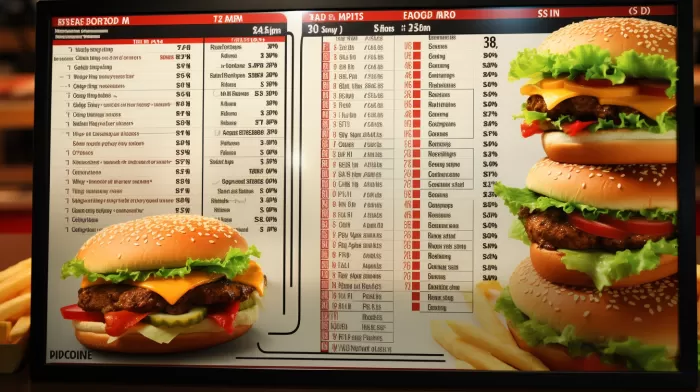If you’re struggling to make healthy choices when eating out at fast food joints, you’re not alone. Even though the federal government has mandated that restaurants with 20 or more locations must provide calorie information and nutritional facts on their menus, research has shown that these labels are often confusing and don’t really impact our choices.
In fact, another study by Columbia University researchers found that the complexity of these labels, combined with a lack of clear serving sizes, often leads to consumers having no idea how many calories they’re consuming. It’s time that these fast food giants start providing useful and easy-to-understand nutritional information. Let’s dive in and see why this is so important for our health and how this change may help us make better choices.
The Problem with Current Nutritional Labels
The issue isn’t just that these labels can be confusing; they often require some math skills to decipher, which is not ideal when you’re making a quick decision at a fast food counter. For example, calorie information for meals designed to serve more than one person can be incredibly difficult to interpret.
Furthermore, the study mentioned earlier highlighted an example where a bucket of chicken had calories listed between 3,240 and 12,360, but there was no information provided about how many pieces of chicken equaled one serving. As a result, customers had no idea how many calories they were consuming with each serving.
Why It’s Essential to Understand Nutritional Information
It’s not just about counting calories but knowing the nutritional breakdown of the food you’re eating. Understanding what goes into your meals is essential for maintaining a healthy diet and lifestyle. For instance, a meal high in sugar could lead to a sugar crash, leaving you lethargic and craving more unhealthy snacks. Knowing this information beforehand can help you make better choices and avoid potential pitfalls in your diet.
Moreover, if you have certain health conditions or dietary preferences (such as diabetes or vegetarianism), knowing what’s in your meal is crucial for managing your health and maintaining your chosen lifestyle. Easily understandable and accessible nutritional information could help individuals make informed choices.
Making Labels More Effective and User-Friendly
There are several ways that nutritional labels could be improved to help consumers make healthier choices. First and foremost, providing clear and concise information is essential. This may mean simplifying labels and removing any jargon that may cause confusion.
In addition, ensuring that serving sizes are clearly explained will immensely help consumers gauge how much they are eating. Incorporating visual aids, such as pictures or diagrams, could also be beneficial in making labels more accessible and easy to understand. One study found that using traffic light signals on labels to indicate levels of fat, salt, and sugar could help consumers make healthier choices.
Further, providing healthier options and suggestive selling of better-for-you meals or sides could give consumers more information to allow them to make healthier choices. Listing healthier meals first on the menu is another tactic that could present these options more prominently.
Benefits of Improved Nutritional Labels
By improving nutritional information on fast food labels, we could expect to see several benefits to our health and well-being. First, the transparency and ease of understanding will empower consumers to make more informed decisions when choosing their meals. This may result in individuals opting for healthier options, ultimately leading to lower rates of obesity and associated health problems.
Additionally, making better choices at fast food restaurants could lead to overall improvements in diet and lifestyle. If someone sees the tangible benefits of choosing healthier options at fast food restaurants, they may be more likely to adopt this approach in other areas of their lives.
Lastly, the demand for healthier options may lead to an increase in their availability at these restaurants. The more customers choose healthier options, the greater the incentive fast food chains will have to offer more nutritious choices.
Conclusion
It’s clear that current nutritional labels at fast food restaurants leave a lot to be desired. The confusion and lack of clear information often result in consumers making unhealthy choices, largely due to misunderstanding the true nutritional content of their meals. Improving these labels and providing a better understanding of serving sizes and overall nutrition could have a significant positive impact on consumer choices.
By making this information easily accessible and understandable, we can empower people to make healthier choices, ultimately leading to better overall health and well-being. Next time you visit a fast food joint, don’t be afraid to demand clearer nutritional information, and help push for a happier and healthier society.



